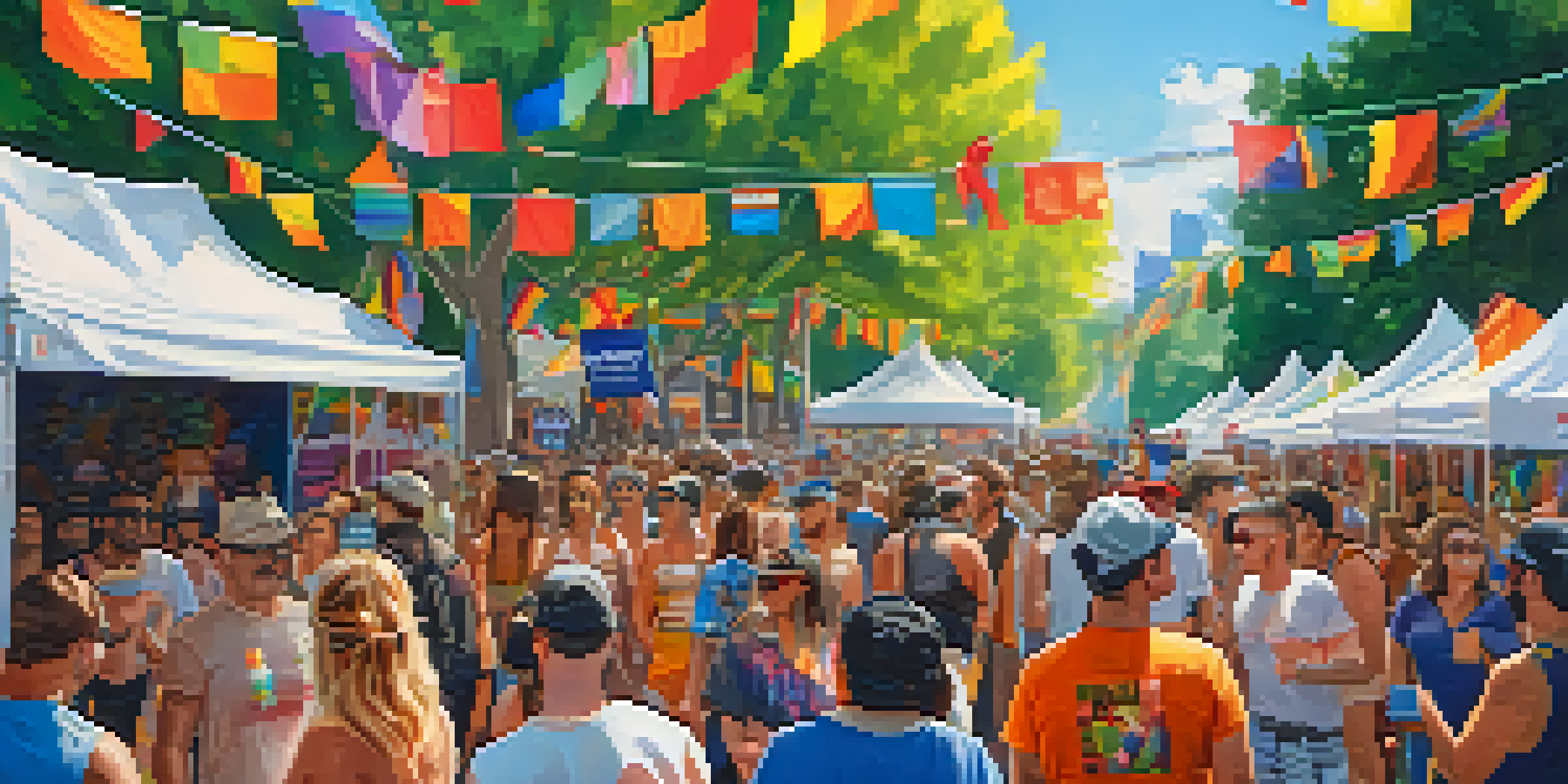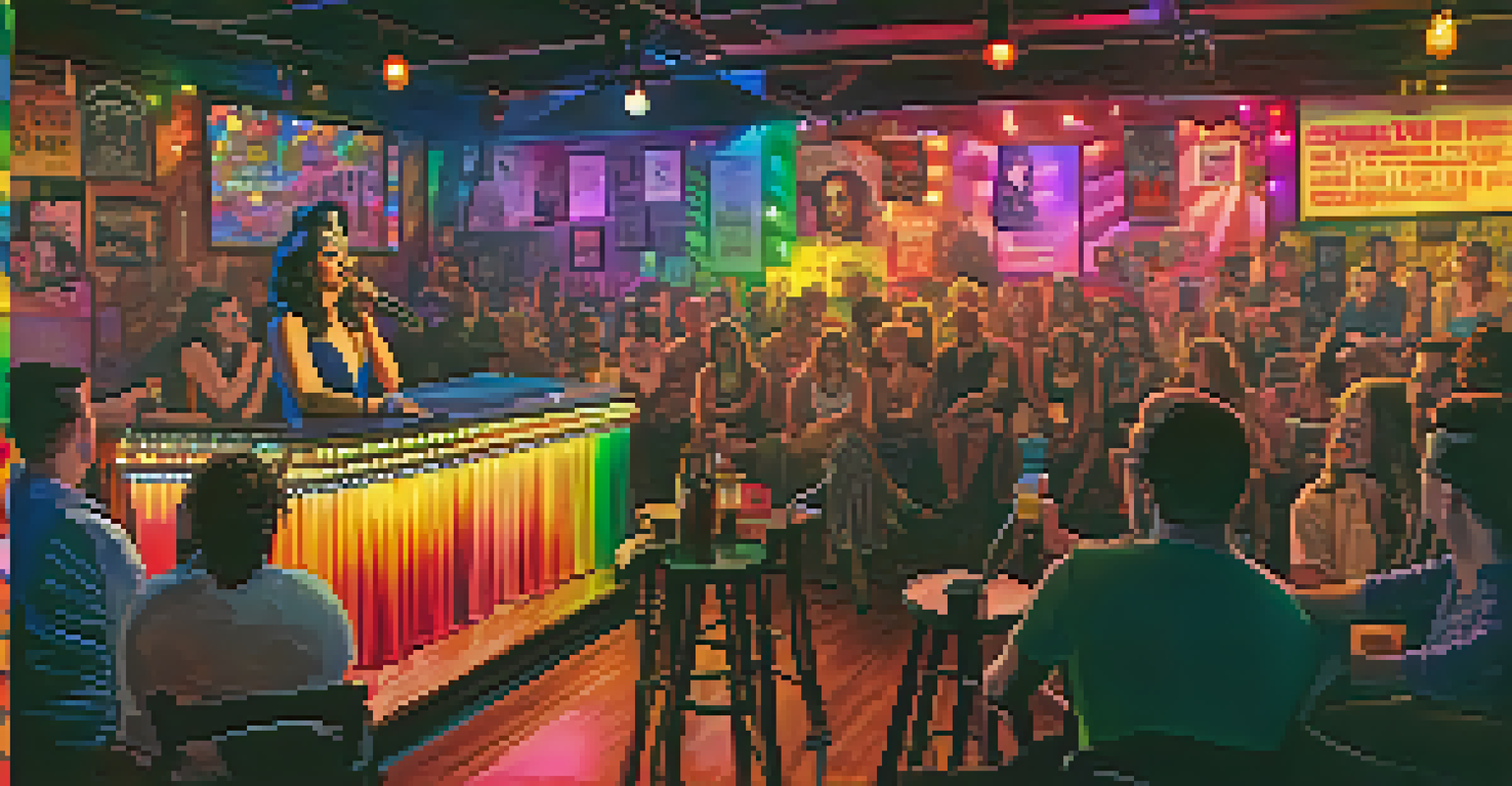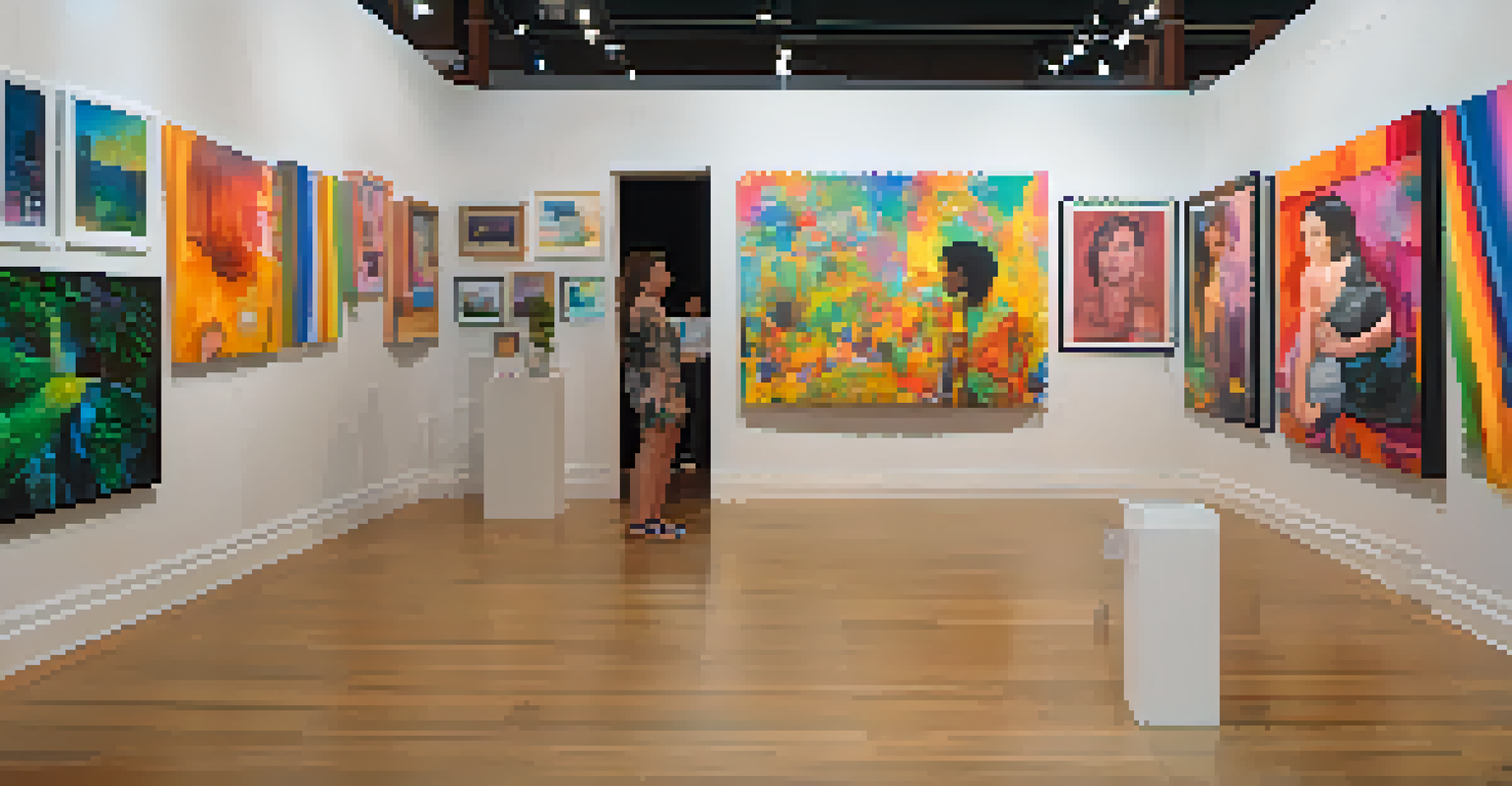The Influence of LGBTQ+ Culture on Austin's Arts Scene

A Brief History of LGBTQ+ Influence in Austin
Austin has long been a haven for LGBTQ+ individuals, with roots tracing back to the early 20th century. The city’s welcoming atmosphere attracted artists and creatives, who found a supportive environment to express themselves. This rich history laid the groundwork for a vibrant arts scene that continues to thrive today.
Art is a reflection of who we are, and the LGBTQ+ community has always brought a unique perspective that enriches our cultural discourse.
In the late 1970s and 1980s, Austin saw an explosion of LGBTQ+ activism, which directly influenced the arts. Events like Pride parades and festivals not only celebrated the community but also showcased local talent. The intertwining of activism and artistry created a unique dynamic that has shaped the city’s cultural landscape.
Today, Austin’s arts scene reflects this heritage, with numerous galleries, theaters, and performance spaces highlighting LGBTQ+ voices. From visual arts to theater, the impact of this community is evident in every corner of the city. The ongoing celebration of LGBTQ+ culture ensures that its influence remains a vital part of Austin's identity.
Diversity in Artistic Expression
The LGBTQ+ community brings a rich tapestry of experiences that enrich the artistic expression in Austin. Artists from diverse backgrounds share their unique perspectives, leading to a broader understanding of identity, love, and acceptance. This diversity fuels creativity and innovation, making the arts scene more dynamic and inclusive.

Local art exhibitions often explore themes of gender, sexuality, and social justice, inviting audiences to engage with complex subjects. For instance, events like the Austin LGBTQ+ Pride Festival feature artwork that challenges societal norms and sparks important conversations. These artistic contributions foster an environment of empathy and understanding.
LGBTQ+ History Shapes Austin's Arts
Austin's vibrant arts scene is deeply influenced by its rich LGBTQ+ history, which fosters creativity and activism.
Moreover, the celebration of LGBTQ+ artists is evident in annual events such as the Queer Arts Festival, which highlights their talents and stories. By prioritizing these voices, Austin’s arts community becomes a platform for change, encouraging social dialogue and inspiring future generations of artists to express themselves authentically.
The Role of Iconic Venues
Austin is home to numerous venues that cater specifically to the LGBTQ+ community, serving as vital hubs for artistic expression. Places like The Paramount Theatre and The Stateside Theatre host performances that celebrate queer culture, attracting diverse audiences. These venues not only provide a space for artists but also create a sense of belonging for the community.
The role of the artist is to make the revolution irresistible.
Additionally, bars and clubs like The 500 Club and Cheer Up Charlie's often feature local artists, musicians, and drag performances. These spaces encourage creativity in a relaxed setting, allowing performers to connect with their audience on a personal level. The fusion of nightlife and art cultivates an environment where creativity flourishes.
The prominence of these venues helps to normalize LGBTQ+ narratives in mainstream culture. By showcasing queer talent regularly, they promote visibility and acceptance within the broader Austin community. This ongoing dedication to representation helps to break down barriers and fosters a more inclusive arts scene.
Collaborative Art Projects and Initiatives
Collaboration is a cornerstone of Austin’s arts scene, particularly within the LGBTQ+ community. Various groups and organizations partner to create impactful projects that highlight queer narratives. Initiatives like the LGBTQ+ Cultural Heritage District aim to preserve and promote the cultural contributions of this community.
Art collectives, such as the Queer Arts Alliance, provide a platform for artists to collaborate on exhibitions and performances. These group efforts not only amplify individual artists but also foster a sense of unity and shared purpose within the community. The result is a vibrant tapestry of creativity that reflects the collective voice of LGBTQ+ individuals.
Diversity Fuels Artistic Innovation
The diverse experiences of LGBTQ+ artists enhance the artistic expression in Austin, promoting themes of identity and acceptance.
Furthermore, collaborative events such as art walks and open mic nights encourage participation from all community members. These gatherings create a welcoming environment, allowing artists to share their work while building connections with one another. The spirit of collaboration ensures that diverse voices continue to be heard and celebrated in Austin's arts landscape.
Emerging Artists and New Voices
As the arts scene in Austin evolves, so too do the emerging voices from the LGBTQ+ community. Young artists are increasingly stepping into the spotlight, bringing fresh perspectives and innovative ideas. Their work often challenges traditional norms and presents new narratives that resonate with contemporary audiences.
Programs and initiatives designed to support young queer artists, such as mentorship opportunities and grants, play a crucial role in their development. These resources help nurture talent and provide a pathway for these emerging voices to thrive. As a result, the arts scene continues to diversify and expand.
The emergence of new artists also reflects broader societal changes, as themes of identity and inclusivity become more prominent in popular culture. This evolution keeps Austin's arts scene vibrant and relevant, ensuring that it remains a pulse point for creativity and expression. These new voices will undoubtedly shape the future of Austin's artistic community.
The Impact of Festivals and Events
Festivals and events play a significant role in showcasing LGBTQ+ culture within the arts scene of Austin. Events like the Austin LGBTQ+ Film Festival and Pride Festival not only celebrate the community but also provide a platform for artists to present their work. These gatherings attract locals and visitors alike, fostering a sense of unity and celebration.
The exposure gained at such events can be transformative for artists, offering them the chance to connect with industry professionals and expand their audience. This networking creates opportunities for collaboration and growth, further enriching the arts landscape. The excitement generated by these festivals also encourages more artists to participate in the creative process.
Resilience Amidst Ongoing Challenges
Despite facing challenges like funding disparities, the LGBTQ+ community in Austin continues to advocate for visibility and representation in the arts.
Moreover, these events contribute to the city's overall identity as a cultural hub. By highlighting LGBTQ+ contributions to the arts, Austin positions itself as a progressive and inclusive city. The ongoing celebration of these festivals ensures that LGBTQ+ culture remains an integral part of Austin's vibrant arts community.
Challenges and Resilience in the Arts Scene
Despite the progress made, LGBTQ+ artists in Austin still face challenges within the broader arts scene. Issues such as funding disparities and representation can hinder the visibility of queer artists and their work. However, the resilience of the LGBTQ+ community shines through as artists continue to advocate for their place in the cultural landscape.
Grassroots organizations and community groups are actively working to address these challenges by providing resources and support for LGBTQ+ artists. Initiatives aimed at promoting equity and representation help pave the way for more inclusive opportunities. This collaborative effort ensures that the arts scene remains a space where all voices can be heard.

The determination of LGBTQ+ artists to persevere despite obstacles is a testament to their strength and creativity. Their ability to transform personal struggles into powerful art serves as an inspiration for others. As the arts scene continues to evolve, it is this resilience that will keep Austin’s artistic community dynamic and diverse.